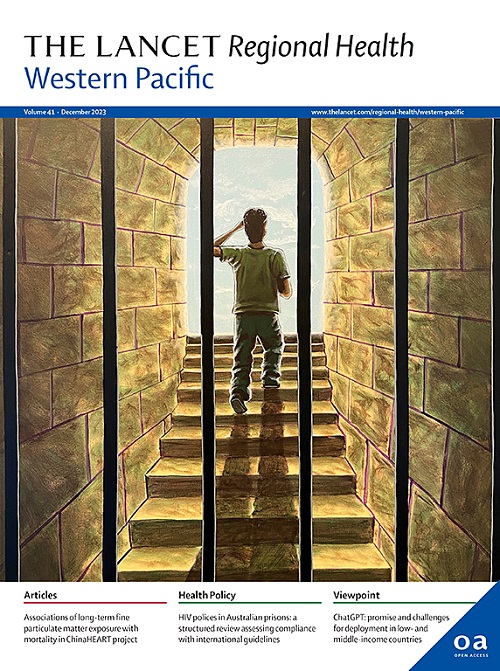Heatwave warnings mitigate long-term cardiovascular diseases risk from heat-related illness: a real-world prospective cohort study
IF 7.6
1区 医学
Q1 HEALTH CARE SCIENCES & SERVICES
引用次数: 0
Abstract
Background
Global warming is intensifying, exacerbating associated health issues. Heat-related illness, a critical risk during heatwaves, significantly impacts public health, yet its long-term health effects remain poorly understood. We established a cohort to investigate these health impact and explore the mitigative role of heatwave warnings.
Methods
Our cohort study enrolled 9,658,745 participants free of cardiovascular disease (CVD) at baseline from 1332 hospitals and 922 primary care centres in Shenzhen, China. The cohort was observed and followed up from January 1, 2017, to July 31, 2023. We utilized Cox proportional hazards model to analyse CVD incidence among participants who had heat-related illness versus those who did not, and further assessed causal relationship using instrumental variable approach. We employed stratified logistic regression to explore the protective effects of heatwave warning policies.
Findings
Among 9,658,745 participants followed up to 6 years, 238,278 (2.47%) developed CVD. People who developed CVD were generally older, male, with a higher degree of education, and with more hospital admissions before baseline. Heat-related illness was associated with CVD, with a hazard ratio of CVD 2.526 (95% CI = 2.301–2.773) among patients with heat-related illness compared with those without heat-related illness, and instrumental variable approach analysis suggested causation. Issuing heatwave warnings reduced hospital admissions for heat-related illness (OR [95% CI] = 0.902 [0.832–0.977]) and future CVD risk (OR [95% CI] = 0.964 [0.946–0.982]). The mitigative role of heatwave warnings suggested delayed effect, with mitigative effect at greatest magnitude one to two days after issuance for heat-related illness admission and three to four days for CVD.
Interpretation
Our study suggested that heat-related illness has significant long-term impacts on future CVD incidence, which can be mitigated by heatwave warnings.
Funding
This study was supported by the National Natural Science Foundation of China (No. 42277419), the Sanming Project of Medicine in Shenzhen (No. SZSM202111001), and the Research Fund of Vanke School of Public Health in Tsinghua University.
求助全文
约1分钟内获得全文
求助全文
来源期刊

The Lancet Regional Health: Western Pacific
Medicine-Pediatrics, Perinatology and Child Health
CiteScore
8.80
自引率
2.80%
发文量
305
审稿时长
11 weeks
期刊介绍:
The Lancet Regional Health – Western Pacific, a gold open access journal, is an integral part of The Lancet's global initiative advocating for healthcare quality and access worldwide. It aims to advance clinical practice and health policy in the Western Pacific region, contributing to enhanced health outcomes. The journal publishes high-quality original research shedding light on clinical practice and health policy in the region. It also includes reviews, commentaries, and opinion pieces covering diverse regional health topics, such as infectious diseases, non-communicable diseases, child and adolescent health, maternal and reproductive health, aging health, mental health, the health workforce and systems, and health policy.
 求助内容:
求助内容: 应助结果提醒方式:
应助结果提醒方式:


